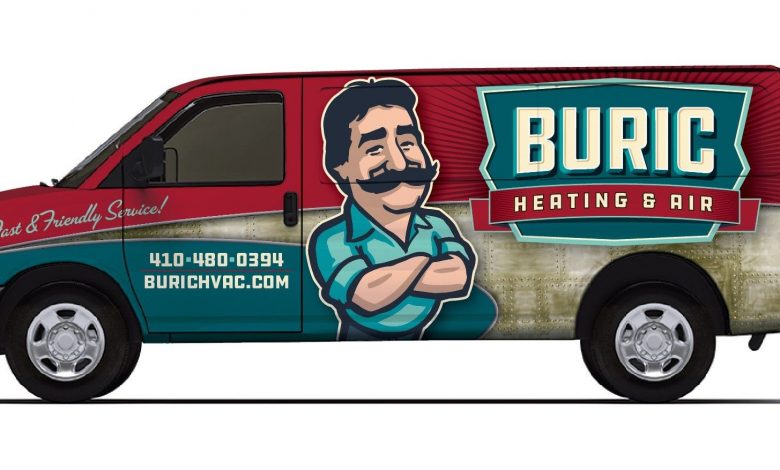Getting Ahead Through Design
Branding expert Dan Antonelli on why design holds the key to a more profitable wrap shop.
The one thing that many wrap shops wrestle with is pricing. In many areas, it has unfortunately become a race to the bottom. It’s become more a question of who has the lowest price per square foot, instead of which shop is the best shop from not only an install perspective but a design perspective. With more and more shops attaining similar certifications, the lines from a consumer standpoint become more and more blurred.
So, while your shop may be awesome at installationÂ-maybe your competitor is, as well. Maybe they have even more qualifications than you. Maybe they’re selling their work at $1 less a square foot than you.
But here’s an interesting scenario. What if they couldn’t design like you could? What if you were not only a great installation company, but the best wrap design company as well-with work which delivered a consistent ROI for your customers. Now, the scenario changes-and their bargaining leverage changes. Because now, it’s not as much a question on your install price since the reality becomes that they cannot get the same thing down the road. If they want to give their business the best chance for success, they can’t simply just go down the road and get it.
It’s great to see the industry working so hard on certifications for installs, and how it’s trying to educate the public on how to find qualified wrap companies. It helps level the playing field, so to speak. Which is good-and it’s bad. The bad part is it fundamentally ignores the function of design in building effective truck wraps. And it lumps all shops together in terms of their ability to print and install a wrap. At the end the day, a flawless wrap installation with an awful wrap design is still a failed marketing exercise. And of course, the opposite is true. The best design with a poor installation, will fail as well.
Selling design requires a commitment, just the same as obtaining wrap certifications. It’s a lot of work and requires constant study. Not only from a design perspective, but the work that goes into marketing your business as well. Here’s a few tips on what it takes.
Keys to selling more design:
Look the part. For some reason, many wrap companies seem to not invest in their own branding. It’s nearly impossible to sell branding as part of a wrap design if you yourself are ignoring the fundamentals of branding. Put your ego aside if you can’t design your own branding. That is sometimes the hardest thing for owners to do themselves. Choosing the expertise of a professional is not a sign of weakness; it’s smart business. Your brand is for your audience who hope to buy from you-not your pals, your family, or anyone else not in your target audience.
Design is always separate from print and install. The moment you say design is included with your price is the moment you’ve just commoditized your deliverable to the consumer. Now they view that part as unimportant-because it’s “free.” I can assure you that there’s plenty of people willing to pay for wrap design by itself. If your competition is giving them away, it’s probably because they should be giving them away. They’re probably worthless to begin with. Once you say design is separate, it sets the tone. Explain the time it takes to do it right. If logos are being developed, they absolutely have to be dealt with as a standalone deliverable.
Study why branding is important to wrap design. There’s not a lot of discourse on what goes into effective wrap design, but there are some good books that talk about why brand is central to the success of any wrap. Hard to say that without plugging my book, “Building a Big Small Business Brand”, but it does talk extensively on how to build small business brands and implement them on vehicles. Trade shows, magazines and studying the work of designers you admire is also helpful. But don’t just copy their work; rather study the elements that make their designs successful and look for ways to implement it in your own work.
Don’t fall into the trap of designing for your peers; they’re not your audience. Everyone wants to design something totally cool. But make sure your objectives remain in focus, and that these ‘cool’ elements don’t come at the expense of your ultimate marketing mission. You are designing to help a business grow. Often you see background elements totally detract-instead of enhancing the brand messaging.
Design like lives are at stake. This is huge. And I’m saddened to see some really poor designs out on the road that are guaranteed to fail. I get that sometimes you have to cash the check and move on because the client wants something awful. But it’s your job to make sure it never gets to that point. You have to be their advocate. The design will impact their business, either positively or negatively-and it’s your ultimate responsibility to make sure it works. This is what separates good shops from great ones.
Highlight the differences of your shop. Make sure your marketing messages-both online and offline-talk about their differences in your shop and what makes you unique. Invest heavily in your digital presence. So many guys think social platforms are the only mediums they need these days. I can assure you if you’re trying to land commercial work, most of your clients aren’t hanging out on Instagram. You definitely shouldn’t ignore social channels, but the reality is websites are so important in communicating your unique selling propositions. I can’t get that info from Facebook and Instagram.
Market your shop with case studies. Another reason why websites are important in your marketing mix is it gives you an opportunity to tout your successes. As a business owner, my primary questions are: How can you help me grow my business; And who have you helped that’s just like me? Things to showcase might be before and after photos, as well as information that demonstrates ROI. How much did that business grow after you helped them with their fleet branding? Seek and use testimonials from clients, and also showcase before and after images. People love to see visuals to help them imagine how to take their bland brand and turn it into something disruptive.
Invest in how you present your work online. Make sure you display your work professionally. Hire a photographer, or make sure your Photoshop comps are polished and mocked up properly. Then integrate the images on your social channels, and your site.
Embrace design at your shop. From the moment someone walks into your shop, make sure that element is clear. The more your shop focuses on design, the less it will be about price per square foot to print and install.












